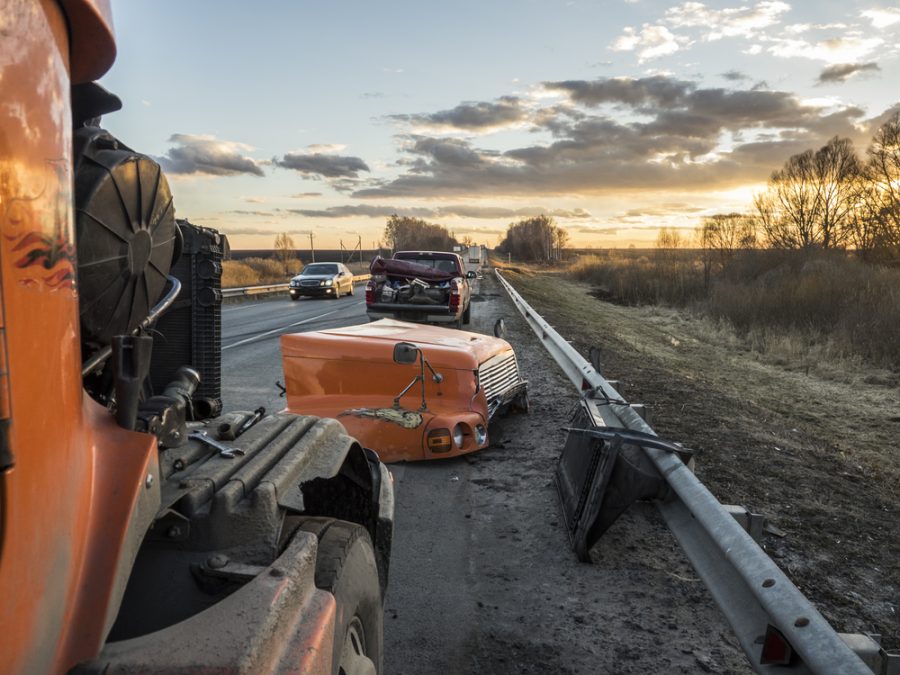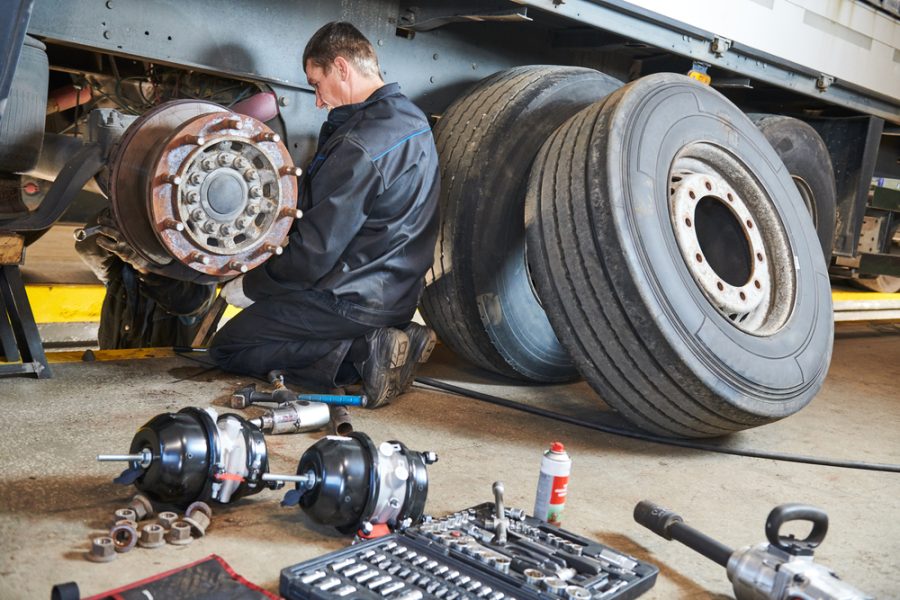When it comes to road safety one of the most important rules to understand is the stopping distance of semi-trucks. Understanding the stopping distances of these big rigs is important for truckers but also for everyone sharing the road with them. Big rigs are big and heavy so they need more distance to stop than smaller vehicles. Weather conditions especially rain can greatly affect stopping distances. Knowing and anticipating the weather’s impact on stopping distances is key to controlling and avoiding accidents.
Stopping Distances for Semi-Trucks
Stopping distance is a basic road safety concept, especially for semi-trucks. It has two parts: perception distance and reaction distance. Perception distance is the distance a vehicle travels from the moment a driver sees a hazard until he starts to react. Reaction distance is the space covered from the time the driver starts to act (apply brakes) until the vehicle starts to slow down. Together these two distances make up the initial part of the stopping distance before the brakes even engage.
Semi-trucks use air brake systems which is different from the hydraulic brake systems found in most passenger vehicles. Air brakes use compressed air to apply pressure to the brake pads which then slow down the truck. This is effective for heavy-duty vehicles because it can generate more braking force.
Hydraulic brakes use fluid pressure to activate the brake. One unique feature of air brake systems is air brake lag distance. This is the time it takes for the air to travel through the brake lines and activate the brakes after the driver presses the brake pedal. This lag can add a second or two to the total stopping distance which may not seem significant but can be feet or yards at high speeds.
How Air Brakes Work
Unlike hydraulic brakes found in smaller vehicles, air brakes use compressed air to activate the braking mechanism. When a driver presses the brake pedal it opens a valve that allows compressed air from the storage tanks to flow into the brake lines. The air pressure then pushes against the brake drums and creates friction that slows down and eventually stops the truck. The air brake system is designed to provide consistent and reliable braking power.
Several components work together to make air brakes work. The brake pedal is the driver’s interface with the system and controls the flow of air pressure. The compressed air stored in the tanks is the force that activates the brakes. Brake drums attached to the wheels are engaged by the air pressure and the brake lining (made of durable friction material) makes contact with the drums to slow down the vehicle. Air brakes are more reliable and safer. For example, the system is fail-safe; if there is a loss of air pressure the brakes will automatically engage and prevent accidents.
Each part plays a role from the initial pedal press to the friction that stops the truck. Understanding how these parts work together helps in appreciating air brakes.
Stopping Distances
All kinds of weather but especially rain can affect the stopping distances of semi-trucks. Wet roads reduce tire traction making it harder for the brakes to slow down the vehicle. When the pavement is slick the tires have less grip and longer stopping distances. For truck drivers, this means they need to be more cautious and start braking earlier than they would in dry conditions. Passenger vehicle drivers should be taking the same precautions in adverse weather. Using your brakes correctly can be the difference between a controlled stop and an accident.
Brake fading is another factor that affects stopping distances. Brake fading occurs when the brakes overheat and lose their effectiveness. This heat is often generated during prolonged or repeated braking like on long downhill grades. When the brakes get too hot the friction material in the brake lining becomes less effective and longer stopping distances. Truck drivers should know how to manage brake heat through techniques like engine braking, stab braking, and taking breaks to let the brakes cool down.
Controlled braking and proper braking techniques are key to safe stopping distances. Controlled braking is when you brake in a steady and measured way rather than slamming on the brakes which prevents skidding and maintains vehicle control. In urban areas with frequent stops controlled braking means smooth stops without jolting the cargo, reduces brake wear, and extends brake life.
Proper braking techniques go beyond controlled braking. Another technique is threshold braking where you brake firmly up to the point just before the wheels lock up and maximize braking force without skidding. On long descents using the engine brake (or Jake Brake) helps slow down the truck reduces the use of foot brakes and prevents overheating. When approaching a curve brake before you enter the turn and gradually release the brakes to maintain control and prevent the trailer from pushing the cab into a skid. In heavy traffic anticipate the stops and maintain a safe following distance so you can gradually decelerate and prevent abrupt stops and rear-end collisions.
Reckless Driving and Risks Around Semi-Trucks
Reckless driving around semi-trucks can create very hazardous situations. Often times it’s only the braking force of the semi that prevents an accident. Sudden movements like jerking the steering wheel or slamming on the brakes can cause a loss of control for both the car and the truck. These rapid and unexpected actions can cause skidding or jackknifing. For truck drivers sudden braking is especially dangerous because the weight and momentum of the truck make it harder to stop quickly. One of the biggest risks of reckless driving is the wheels locking up which can cause loss of steering control. When a truck’s wheels lock the driver can no longer steer and the vehicle will slide out of control. This is more dangerous on wet roads where reduced traction makes it easier for the wheels to skid.
Because of the size and length of semi-trucks, they have bigger blind spots than passenger vehicles so drivers who cut off trucks, linger in their blind spots, or don’t signal their intentions put themselves at risk. When a car is in a truck’s blind spot the truck driver may not see it and could accidentally cause an accident during lane changes or turns. Keeping a safe distance and being aware of a truck’s limited visibility can reduce accidents.
Semi-trucks need more space to maneuver and make bigger steering adjustments than smaller vehicles. Following too close or cutting in front of a truck limits the driver’s reaction time to sudden changes in traffic. A safe following distance gives truck drivers the space to brake or stop without causing an accident. Knowing the braking distance of semi-trucks helps all road users anticipate their movement and be safe for themselves and others.
Driving Near Semi-Trucks
Safe driving requires extra awareness especially when sharing the road with semi-trucks. One practice to remember is to maintain steering control, especially in tricky situations. Here’s how:
- Avoid sudden pulls or extreme steering movements as these can make your vehicle swerve unpredictably and create hazardous situations. Smooth and gradual steering adjustments keep your car stable and predictable.
- Hold the Steering Wheel Firm. Always hold the steering wheel with both hands preferably at the 9 and 3 o’clock positions. This grip gives you better control and allows for quick and precise movements if needed.
- Sudden movements can startle truck drivers and reduce their reaction time. Stay in your lane and make gentle turns so truckers can anticipate your actions and keep a safe distance.
- Sudden lane changes or jerky movements can startle truck drivers and reduce their reaction time as their reaction time is limited by the size and weight of their vehicle.
- Check your mirrors regularly to be aware of the traffic around you including the position and movement of semi-trucks. This awareness allows you to anticipate their actions, and control and adjust your steering wheel movements accordingly.
Emergency Procedures and Precautions
Be prepared for emergencies on the road and know how to use the proper precautions. One proper precaution is to know how to use the emergency brake also known as the parking brake. It’s designed to hold the truck stationary and should be used when the vehicle is parked. But in an emergency, it can be engaged to help stop the vehicle if the service brakes fail. Service brakes are the primary braking system and should be applied smoothly and consistently to avoid locking the wheels and losing control.
Brake adjustments and air tank drainage during regular maintenance checks ensure the brakes are engaging properly and have stopping power. Draining the air tanks regularly will prevent moisture buildup which can freeze and cause brake failure in cold weather. Moisture buildup can also cause rust and corrosion in the brake system damage the components and reduce its effectiveness. Well-maintained brakes are more responsive so drivers can react fast to sudden stops or emergencies. This quick reaction time can be the difference between avoiding an accident and a collision.
ABS and spring brakes are two different braking systems used in different applications. ABS prevents the wheels from locking up during hard braking so the driver can still have steering control. Spring brakes are a fail-safe that automatically applies the brakes if there is a loss of air pressure in the system. These precautions and safety features work together to make the braking system reliable.
Conclusion
Knowing the stopping distance of semi-trucks is crucial for road safety. By maintaining a safe following distance, avoiding sudden movements, and being aware of the bigger turning radius and braking requirement of these vehicles you can be safest. Knowing how air brakes work and using controlled braking techniques can also prevent emergencies when the wheels start to roll. Regular maintenance checks and immediate attention to brake problems will make sure semi-trucks are running safely for the drivers and everyone else on the road.




